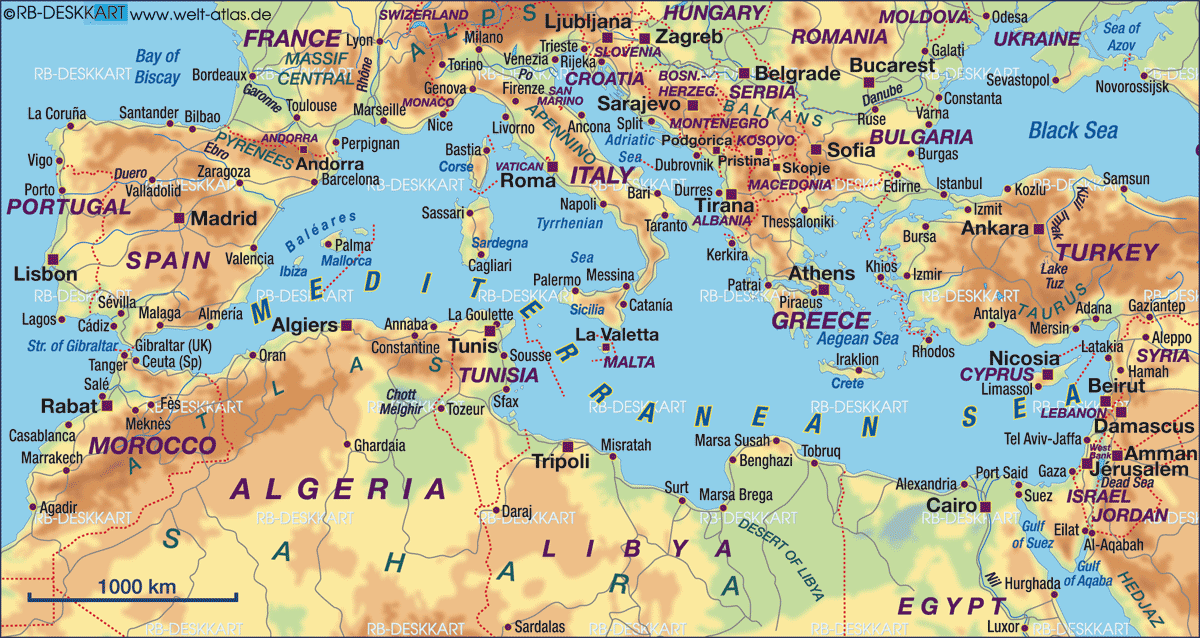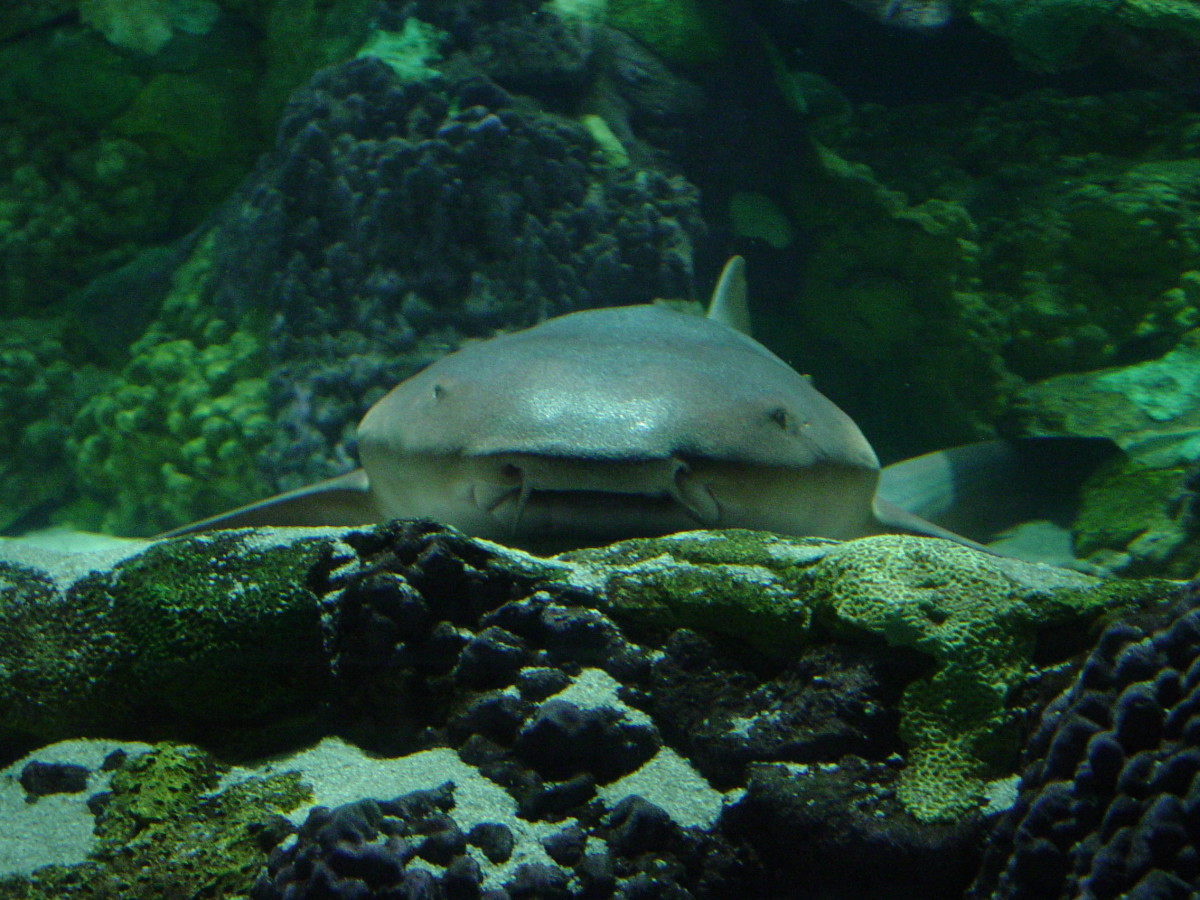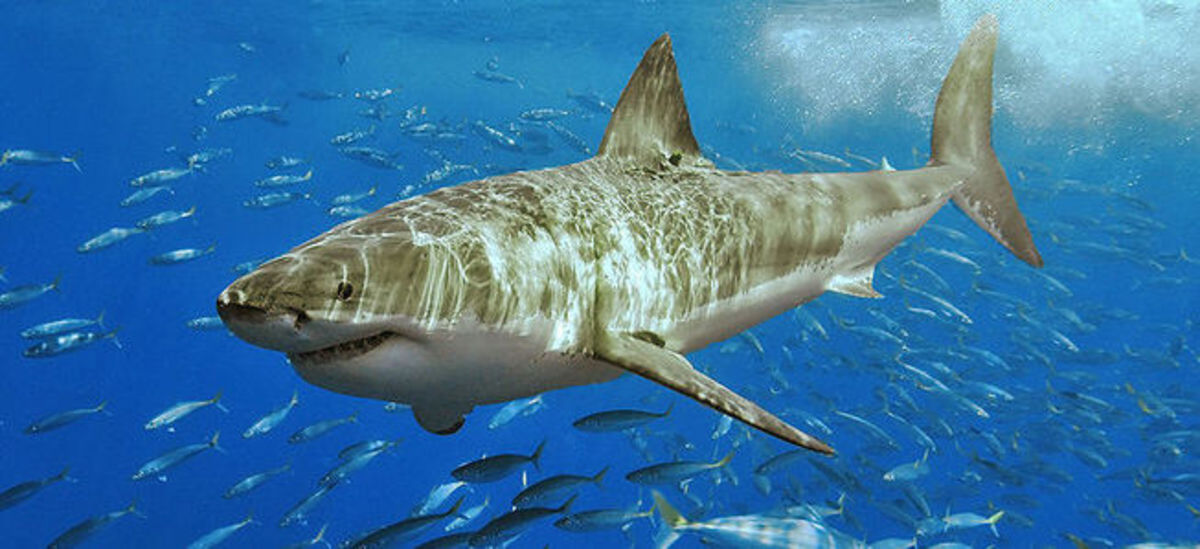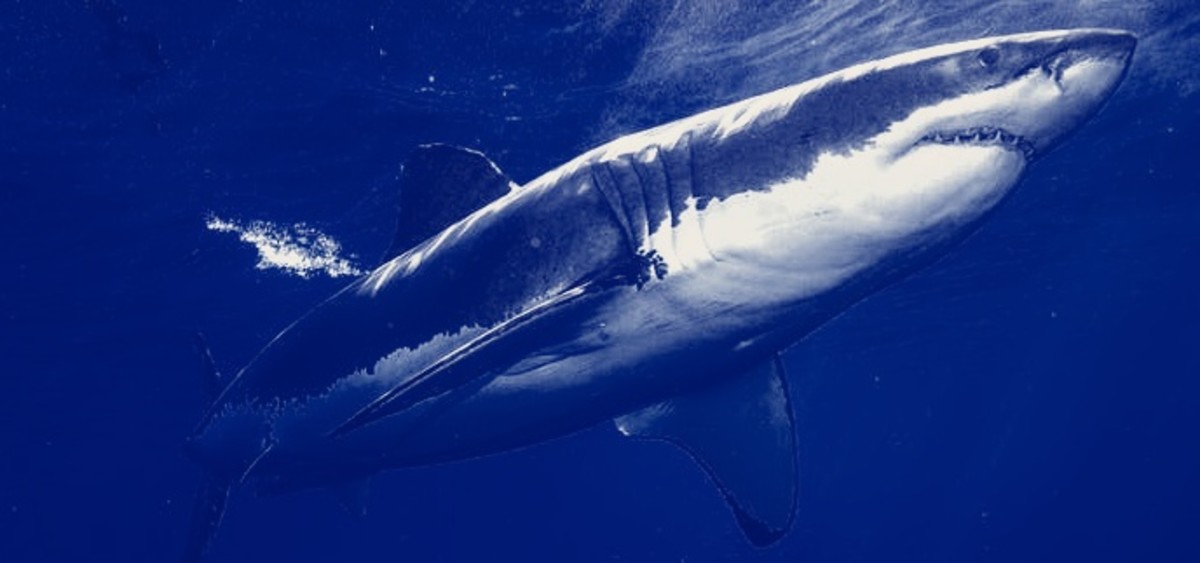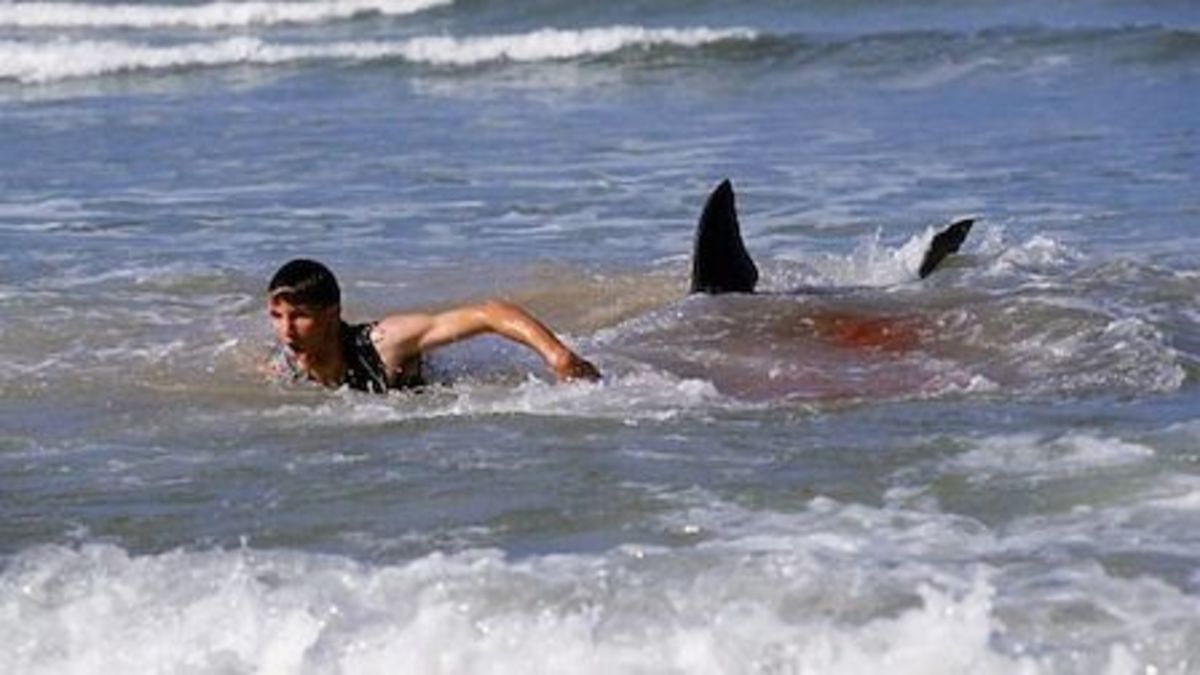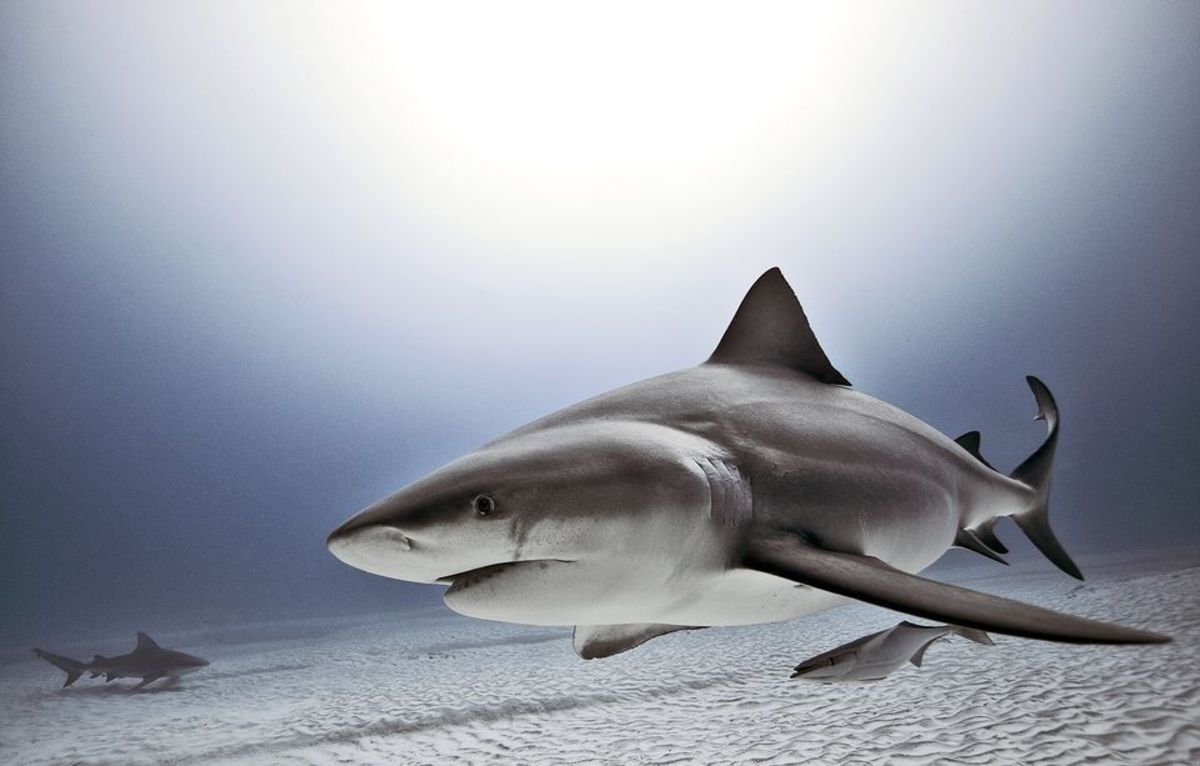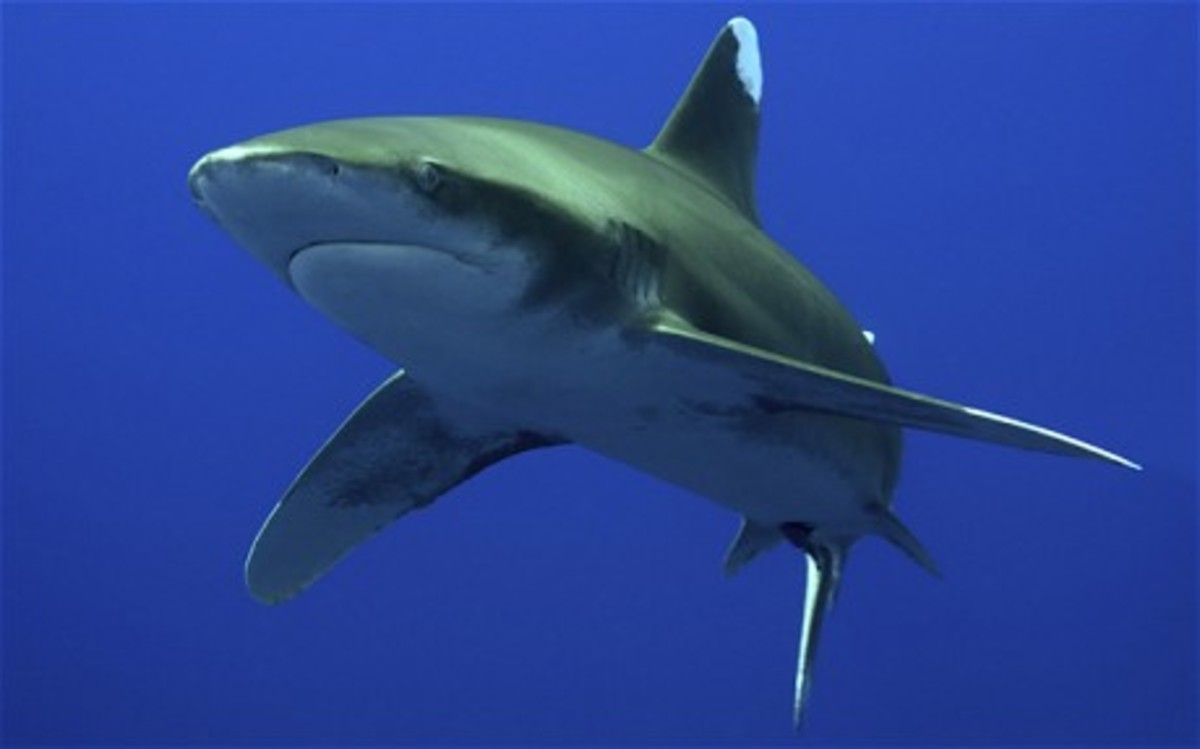- HubPages»
- Education and Science»
- Life Sciences»
- Marine Biology»
- Marine Life
Great White Shark, the flawless predator
Scientific Name: Carcharodon carcharias
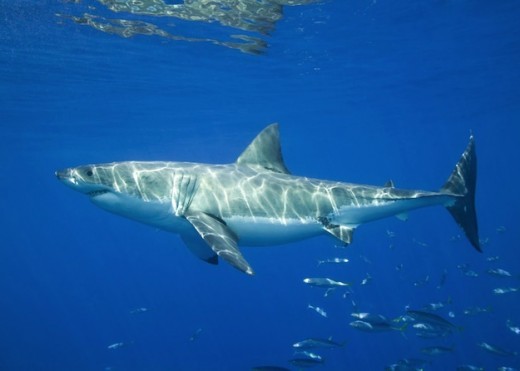
Great White Shark Description
The Great White Shark is quite feared by people out there, and there are many stories of them attacking people to keep you on guard when you are in the water. They are very large animals that can be as long as 20 feet. They can also weigh as much as 5,000 pounds. They are considered to be one of the most dangerous predators in the world. Since they don’t have any natural predators that is also a big concern.
If you aren’t sure what a Great White Shark looks like, they are gray in color with white underneath. They also have a cone shaped nose. They are often seen with only their heads or their tails sticking out of the water as they tend to stick to the top area of the waters.
Shark Facts
- Facts about Sharks
Information and facts about sharks. Sharks are one of the most amazing creatures in the earth. They have lived in the ocean for more than 450 million years and they have survived succesfully during this time. - Amazing Animal Facts
Amazing Animal Facts - The Portal of Animal Diversity. Visual index of animals. Dolphins, Whales, Penguins, Sharks, Tigers, Elephants, Flamingos, Otters, Killer
Great White Shark Anatomy
The body of a Great White Shark allows it to be extremely powerful as well. The body is designed to allow it to move very fast through the water. They also have thousands of teeth in their mouth. They don’t use all of them at the same time though. Instead they have front rows that they use. When any of those teeth are lost or damaged then new ones rotate to fit into that area.
They also have the ability to pick up on the electrical currents of humans and other living items in the water. All sharks are able to do this, but the Great White Shark is one that will be curious enough to go exploring. They are also going to use this feature as an opportunity for them to be able to find food. They are believed to be very intelligent creatures as well.
Great White Shark Evolution
How did the Great White Shark come to be the dominant factor out there in many bodies of water? Did they used to have predators but due to evolution that is no longer the case? Did they used to be small sharks but due to the fact that they have such freedom in the water they grew over the course of time? We do have some fossils and teeth from sharks to explore but not actual evidence that solely explains the evolution process of the Great White Shark.
Related Sites
- Killer Whale Facts and Information
Facts about Killer Whales, Habitat, Feeding, Anatomy, Evolution Orca Social Structure, Communication and Orca Conservation - Facts about Whales
Whale Facts and Information. Feeding, habitat, distribution, reproduction, anatomy and more. Facts about Species like the Blue Whale, Humpback Whale, Sperm whale, Beluga Whale and many others. - All about Dolphins
Facts about Dolphins, Information about Bottlenose Dolphins, Pink Dolphins. Dolphin Information
Great White Shark Behavior
These sharks tend to form small groups known as pods. They are very protective of each other. They have large areas of territory where they will hunt for food. What is interesting is that they will separate to hunt and then form their group again when they have had enough food. They will fight among each other though when food is scarce and even consume the smaller ones if they need to.
There is a complex level of hierarchy among the pods of Great White Sharks. A female is always in charge of what goes on within it. However, they are continually battling each other to move up the ladder in their status order. This is why so many Great White Sharks are found with bite marks on them even though they aren’t sought after by other types of animals.
The harder it is for them to find food, the more conflicts that will arise among them. These conflicts will be with their own pod and with others that they come into contact with due to them all looking for food. However, there is some information to indicate that there is a softer side to these sharks as well.
Sometimes they are seen interacting non verbally and even doing some forms of rituals within their pods. It isn’t known how they are able to determine who will become part of their group though. It is believed that decision though also lies with the primary female of the group.
Since they are so curious, they often end up being seen with their heads sticking out of the water and looking around. This allows them to pick up both smells and vibrations faster than they can in the water.
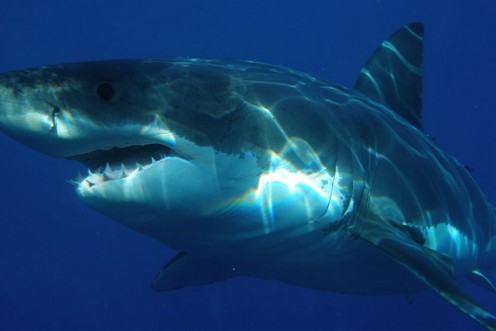
Great White Shark Habitat
Just about any ocean out there contains Great White Sharks; this is due to the temperatures found in them. They are able to successfully survive in temperatures that range from 54 degrees to 75 degrees Fahrenheit. They are most common in the waters of California and the Bahamas. This is also where they come into the most contact with humans as well.
For the most part, the Great White Shark will stay close to the surface of the water. However, they do dive as far as 4,200 feet below the surface when they need to in search of food.
- Manta Ray Facts
Manta Ray Facts and Information. Feeding, habitat, distribution, reproduction, anatomy and more. Also, the conservation efforts made to preserve Manta Rays and how humans have interacted with Manta Rays. - Facts about Polar Bears
Polar Bear Facts and Information. Feeding, habitat, distribution, reproduction, anatomy and more. Also, the conservation efforts made to preserve Polar Bears and how humans have interacted with Polar Bears. - Facts about Seals
Facts and Information about Seals. Feeding, habitat, distribution, reproduction, anatomy and more. Facts about Species like the Harbor Seal, Harp Seal, Hawaiian Monk Seal, and many others.
Great White Shark Feeding Habits
The Great White Shark isn’t out there simply hunting for humans to eat as some people assume. Instead they feed on other types of sharks, lots of different types of fish, dolphins, whales, sea turtles, and even the aggressive sea leopards. During certain times of the year they will consume seals and even penguins when they need to. All types of food sources have been found in the stomach contents of these types of sharks.
Remember all those teeth that I told you about? They are critical to the hunting of prey for the Great White Shark. They use them to powerfully bite their victims and then they swallow them whole. They never use their teeth to chew their prey. When they have captured something that is very large, they will need to use the teeth to break it down into sizable pieces though.
Most of the time the Great White sharks will hunt in the morning hours. They are able to find enough food then while their prey is actually looking for their own food. However, they can hunt at any time of the day or night in order to get adequate amounts of it. This is why some people assume it is safe to be in the ocean later in the day but not in the morning but the danger is always there of coming into contact with one of them.
Great White Shark Reproduction
Reproduction is very interesting when it comes to this species of shark. What is disappointing is that we have never seen the actual birthing process for them. It is considered to be just to much of a risk involved with that for researchers to be there for it. We only have some of the details about that entire process.
The females will create eggs after the conception has taken place. They are in her body and that is where they will hatch. These young are cannibals though and they will consume each other for survival. That means only a small number of them end up being born from her body. There is no maternal instinct either as she will immediately leave them to fend for themselves from the second that they are born.
- Facts about Pollution | Effects of Pollution
Pollution Facts and Information. Effects of Pollution in the Environment
Great White Shark Predators
As I mentioned, the Great White Shark doesn’t have any predators out there in the water that are after them in the way of nature. However, that doesn’t mean they are doing well out there. In fact they are considered to be an endangered species due to the number of them hunted by humans. Even with protective elements in place they continue to be hunted.
Many people find it exciting to hunt such a dangerous predator. It adds a new element to their hunting escapades that they have taken part in. Those that gather fish for a living also hunt them to ensure they have more of a supply of fish to catch and to make money from.

